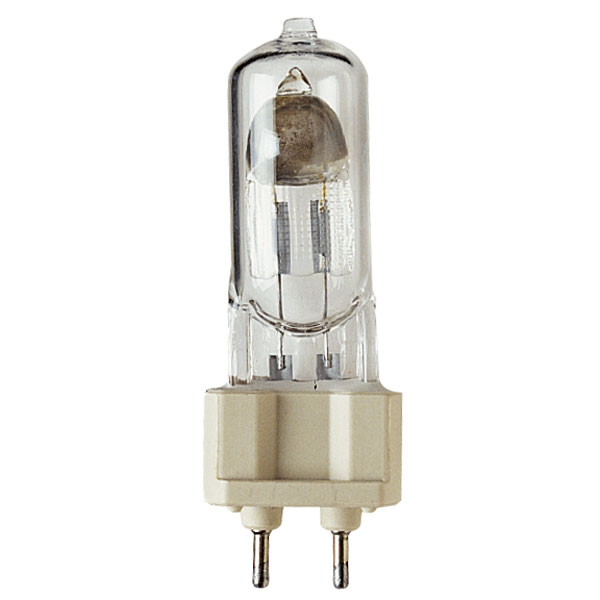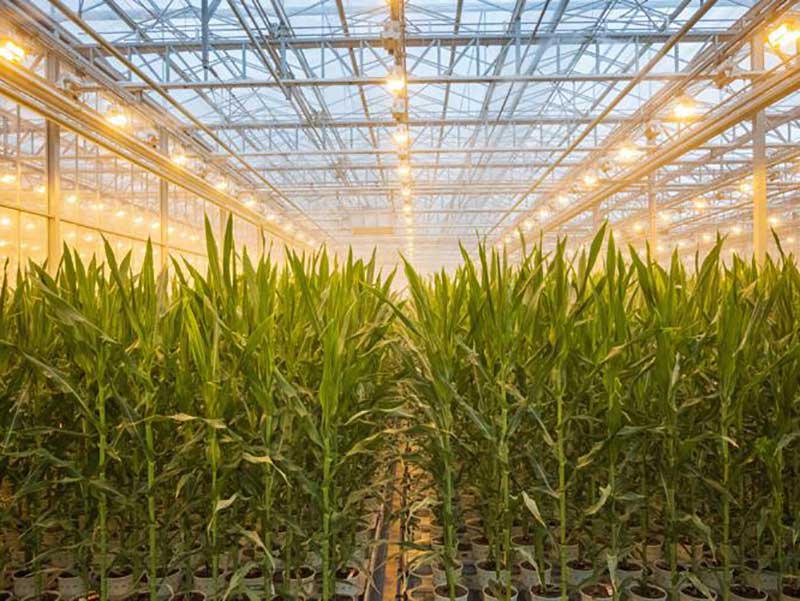Designing the auxiliary light system of the corn greenhouse
Corn is actually not a greenhouse plant and even in summer, its light needs are not fully met (it does not go to saturation).
Corn is not actually a greenhouse plant and even in summer, its light needs are not fully met (it does not go to saturation).
The total light requirement of the plant is equal to 1000mmol/m2/s-1 in 13 hours, which is equivalent to 46.8mol/m2/s-1. According to the meteorological statistics tables of Karaj station, the 25-year average solar radiation in the months of low radiation, i.e. December, January and February, is 265.6 cal/cm2/d-1, which is equivalent to 11.13 Mj/d-1, and therefore, according to the aforementioned calculations, we have:
- The effective amount of growth light per day outside the greenhouse (ppfd): 23.93 mol m-2 d-1
- Growth light per day inside the greenhouse (ppfd): 0.7x23.93 = 16.8 mol/m-2 d-1
- Required auxiliary light 46.8-16.8=30 mol m-2 d-1
Considering that the length of the day for corn is 13 hours, if the lamps are on all this time, we have:
Required auxiliary light intensity:
(30mol/m-2 d-1)/13h = 641mol/m-2 d-1
From these calculations, we conclude that approximately 35% of the required light is provided by the sun and its deficiency must be compensated by lamps.
The area of each research greenhouse unit is 58 square meters, which according to the middle corridors and the required space at the beginning and end, the net area of the cultivation bed is about 30 square meters, so the required luminous flux is equal to:
x30=19230 mmol/s-1 641 mmol/m2/s-1
This should be corrected with the efficiency factor of the reflector and light diffusion (about 30% extra).
22435 x 1.30 = 25000 mmol/s-1
If, according to the aforementioned recommendations, the MASTER SON-T PIA Green Power (600w) lamp is used, considering the 1070 mmol/s-1 light of each lamp, we need 24 projectors.
In case of using MASTER HPI-T (400w) metal halogen lamps, considering the 532 mmol/s-1 light of each lamp, we need 47 projectors. It is clear that this lamp is not a suitable choice due to the excessive shading of the projectors, and due to the presence of considerable sunlight, the blue part needed to avoid grass growth is provided naturally, and there is no need to use metal halogen lamps.
If we want to use a combination of sodium vapor lamps along with "HQI-150 NDL" natural daylight metal halide lamps that do not need a reflector and therefore have less shading, assuming the use of eight lamps (600w ) MASTER SON-T PIA Green Power requires 83 small metal halide lamps.


